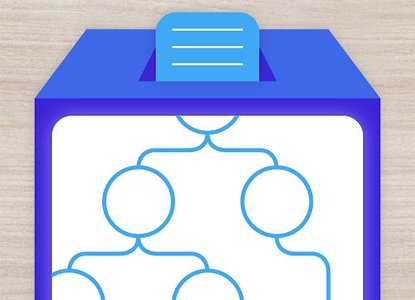Pausing development of the Beneficial Ownership Data Standard

Photo by Kelly Sikkema on Unsplash.
If you have followed our work for some time, you will know about Open Ownership’s Beneficial Ownership Data Standard (BODS). It is a clearly defined way of structuring data about beneficial ownership in a format called JSON, and it had its first “beta 0.1” release in 2017. Since then, we have been developing it with our partner Open Data Services.
This year, we have taken the time to speak to users of the data standard, and to consider its value to beneficial ownership reforms. From what we have heard in these conversations – and with the knowledge that there are few agencies and initiatives currently publishing data in BODS format – we have decided that, for now, supporting use of the BODS 0.4 release is preferable to developing a version 1 release. Focusing our resources on that, as well as on providing wider support for improving data usability, will create immediate benefits for countries implementing beneficial ownership reforms around the world.
Background
Our development of BODS was aimed at creating two main benefits.
First, it allowed us to maintain a focus on information-handling and data-sharing at a time when legislation and regulation for beneficial ownership disclosure was only just forming. We were able to foresee some of the issues that regulators would face as their reforms unfolded, and we could offer early advice.
Second, and most importantly, we wanted BODS to help registrars and agencies think about the format of the beneficial ownership data they would publish. If it turned out to be useful, they might even publish their data in BODS format.
From the beginnings of the data standard to now, we have talked informally to those who were using or interested in it. But earlier this year, we took a deeper look at whether BODS was meeting user needs. We spoke to a cross-section of users: representatives of technical teams; a corporate service provider; a GovTech business; and fellow colleagues at Open Ownership. We also undertook further analysis of the data use interviews we conducted in 2024.
What we found
Through these conversations, we found that the particular value people were getting from BODS was diverse. For a product which is – at face value – a way of publishing beneficial ownership data, this was surprising.
For some users at one end of the spectrum, BODS does not function as a data standard at all. Open Ownership colleagues, and others advocating for greater transparency about the use of corporate vehicles, use it to signify the necessity and feasibility of international data-sharing. Technology providers refer to it to enhance their credibility, and policy-makers nod to it as a commitment to beneficial ownership reforms delivering useful data in the end. You do not need to be a technologist to use BODS in this way.
At the other end of the spectrum, there is conformant adoption of the data standard: an agency or organisation publishing or transferring data using a detailed implementation of the BODS schema. Only a handful of jurisdictions have ever published their data in BODS format. Among the group of people we interviewed, the organisation that got the most value from using the BODS schema had identified it as the best way to capture and transfer data about complete corporate structures. At the moment, this is not a need shared by most registrars who are collecting beneficial ownership disclosures. Whether it is full or partial corporate structures that are published in BODS format, the people using BODS as a schema tend to be software developers and data architects.
In the middle of this spectrum, BODS users have an interesting mix of needs. For software developers and data architects, the data standard and its documentation can be a much-needed gateway to understanding the idea of “beneficial ownership” of corporate vehicles. This is a relatively new concept, which looks different depending on whether you see it from a policy-making or an information-sharing perspective. BODS can also provide a benchmark against which to assess data outputs. For those who are creating systems to standardise beneficial ownership information which comes from different sources, the BODS data model can prompt useful reflection and influence early design choices. Using BODS in these ways does not necessarily mean people have a need to publish information as valid BODS data, but they do have a need for technical advice and signposting.
While technical teams are grappling with data-handling and modelling questions, policy teams also have questions which BODS helps to answer. It has proved to be a useful reference tool for questions like: what information should be collected about listed companies, or what does a useful identifier look like? We also noticed that policy teams would sometimes use BODS as a shorthand for “good-quality data”. Software teams would be encouraged to make use of it in the expectation that this requirement would assure production of usable, useful data.
Meanwhile, our analysis of wider data use experiences proved extremely helpful. It illuminated the features of beneficial ownership data that make it usable for those trying to gain insights or undertake investigations. Many of these features are evident within the data standard, but some sit squarely outside its scope. There is more to producing good-quality data than having it conform to a data standard.
Next steps
Taking all of these findings together, there are some obvious steps that Open Ownership can take to help policy and digital teams.
Firstly, we will test and develop the list of features we have identified which help make beneficial ownership data more usable. Some of these features are necessarily met by publishing data in BODS format (for example, the “Structured data in a well-used format” feature), but some are not (for example, the “Change alerts” feature). We hope that providing a comprehensive framework to describe usable beneficial ownership data will help inform design decisions – not least because it should help policy and digital teams communicate productively about what the users of their systems need.
Secondly, we will produce new and updated BODS documentation pages which help digital teams identify the most relevant elements of the BODS data model for their systems. Publishing BODS-conformant data is not the only, or even the best, way to get value out of the data standard for data users. BODS represents a wealth of insights and learning which should be easy to access. As one interviewee noted, embedded in the data standard are ideas “about a lot of different cases that can occur that we haven't thought about yet”.
Finally, we will identify the projects happening globally where agencies have the most to gain from the use of BODS 0.4, and which will test the usability of the data standard. We are looking for federal and regional contexts where the need for beneficial ownership data-exchange or data centralisation provides a strong case for using BODS.
Our main focus over the next five years is on supporting countries to produce usable beneficial ownership data. Enabling the use of BODS 0.4 over the next year will be a part of that, as will our new work on features for usable beneficial ownership data. We know that the next step of development for BODS – a version 1 release – can only be made if evidence from implementers and demand from potential users supports it. We are excited to see what the next year will bring for our plans and decisions regarding future development of the data standard.
Related articles and publications
Publication type
Blog post


